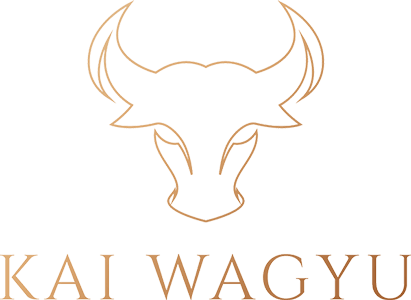Wagyu Beef around the World
Wagyu beef has gained worldwide recognition for its exceptional quality, tenderness, and marbling. While Japan, America, and Australia are known for producing high-quality Wagyu, there are distinct differences in the way they raise, feed, and manage their cattle, resulting in variations in taste, texture, and overall flavor profiles. In this blog post, we will explore the differences in Wagyu beef from Japan, America, and Australia, shedding light on the unique characteristics and approaches of each country’s production.
Japanese Wagyu

Japan is often hailed as the birthplace of Wagyu beef and is renowned for its traditional rearing methods. Japanese Wagyu cattle, such as the famous Kobe beef, are typically raised in small-scale, family-owned farms. These cattle are carefully bred to maintain the desired genetic traits that contribute to high marbling and exceptional meat quality. The feeding regimen of Japanese Wagyu often involves a combination of grain-based diets, high-quality forage, and meticulous attention to detail. The result is beef with intricate marbling, buttery tenderness, and a rich, umami flavor that is unrivaled.
America Wagyu

In recent years, American Wagyu has gained significant popularity and recognition for its own unique qualities. American Wagyu cattle are typically crossbred, combining the genetics of Japanese Wagyu cattle with American beef cattle breeds. This crossbreeding approach allows for a balance between the highly marbled characteristics of Japanese Wagyu and the robust beefy flavors of American beef. American Wagyu cattle are often raised in larger-scale operations and have access to spacious pastures for grazing. They are typically fed a combination of grain-based diets and forage, resulting in beef that exhibits generous marbling, tenderness, and a slightly bolder flavor profile.
Australia Wagyu

Australia has emerged as a major producer of high-quality Wagyu beef, offering its own distinct take on this prized meat. Australian Wagyu cattle are raised in vast, open landscapes, allowing for ample space for grazing. They are typically bred using a combination of Japanese Wagyu genetics and various Australian beef cattle breeds. The cattle are fed a predominantly grass-based diet, supplemented with grain during the finishing period. Australian Wagyu is known for its well-balanced marbling, rich flavors, and a slightly leaner texture compared to its Japanese and American counterparts.
Wagyu Grading

When it comes to grading and labeling, each country has its own system in place to assess the quality of Wagyu beef. In Japan, the grading system is highly regulated, with the highest grade being the A5, which signifies the highest level of marbling and overall quality. In America, the Beef Marbling Standard (BMS) grading system is commonly used to assess marbling scores, ranging from 1 to 12. Australia follows its own grading system, known as the Meat Standards Australia (MSA), which considers various factors including marbling, meat color, firmness, and pH level.
It is important to note that the differences in Wagyu beef from these countries do not imply superiority or inferiority. Instead, they highlight the unique approaches, genetics, and environments that contribute to the distinct flavors and qualities of the beef. The differences in Japan, America, and Australia’s Wagyu beef are a testament to the diverse and dynamic nature of this exceptional meat. Whether you prefer the refined marbling and umami flavors of Japanese Wagyu, the balance of marbling and beefy richness of American Wagyu, or the well-rounded flavors of Australian Wagyu, each country offers its own unique interpretation of this culinary treasure.The choice between Japanese, American, or Australian Wagyu ultimately comes down to personal preference and the specific culinary experience one desires.
